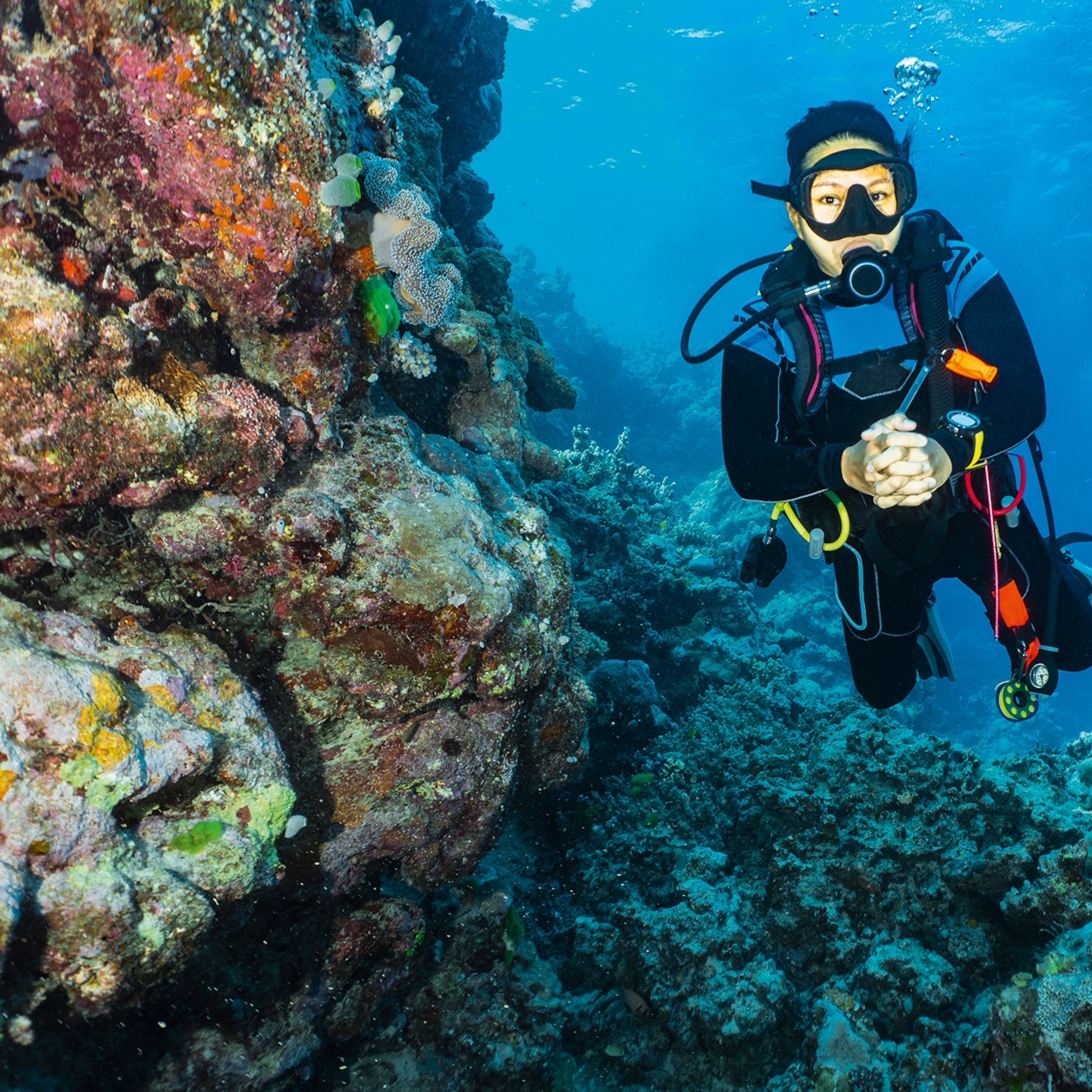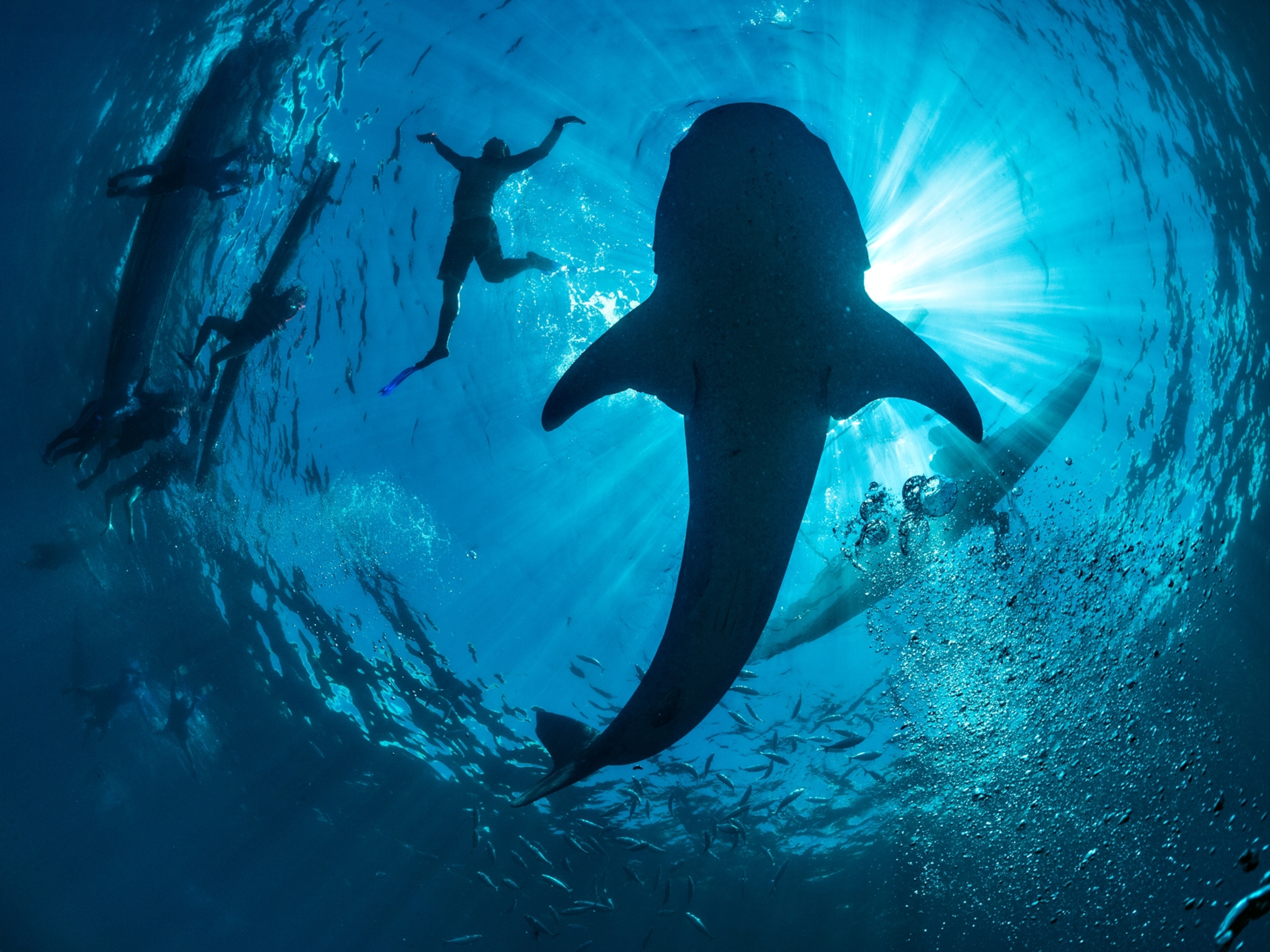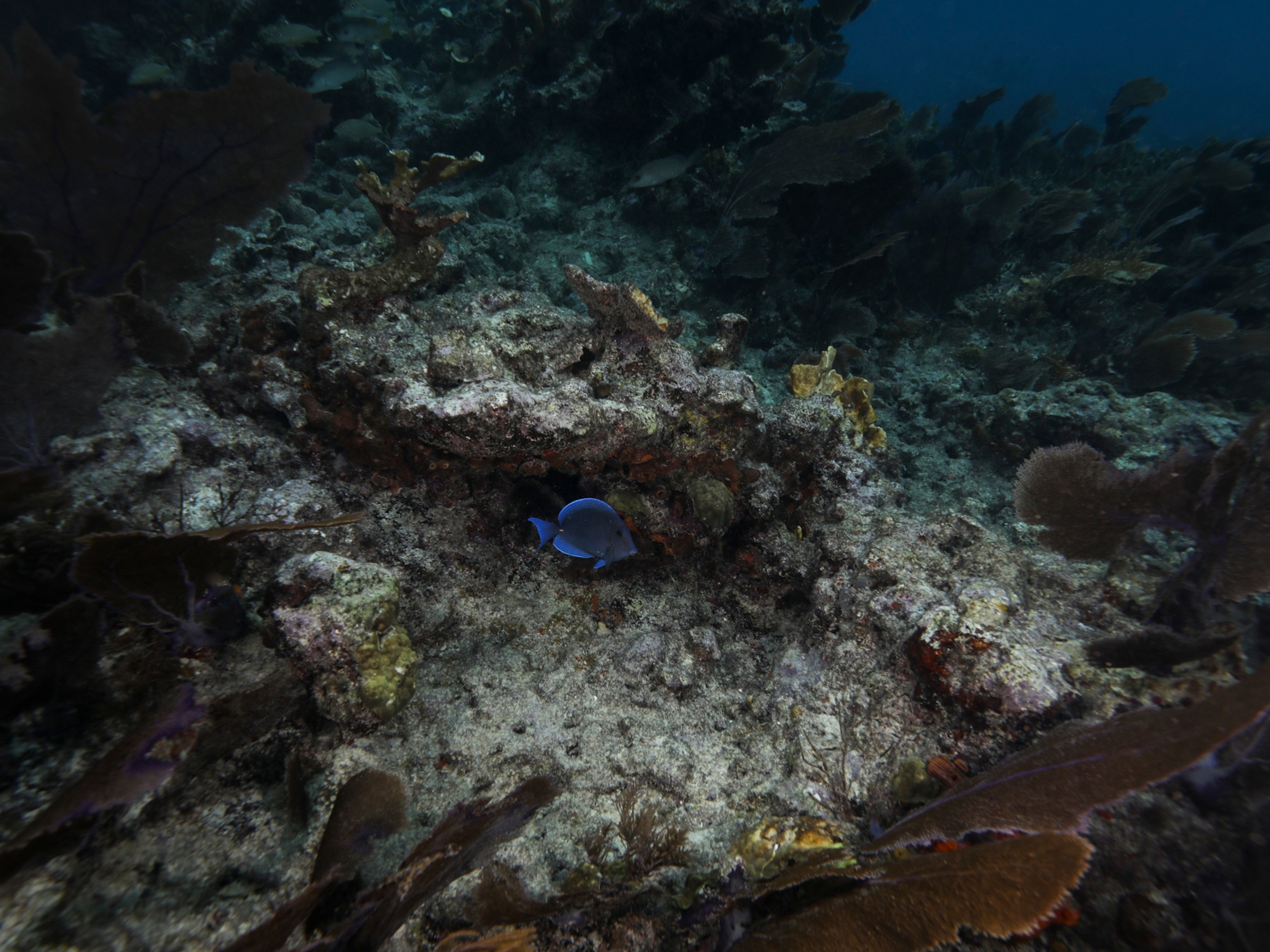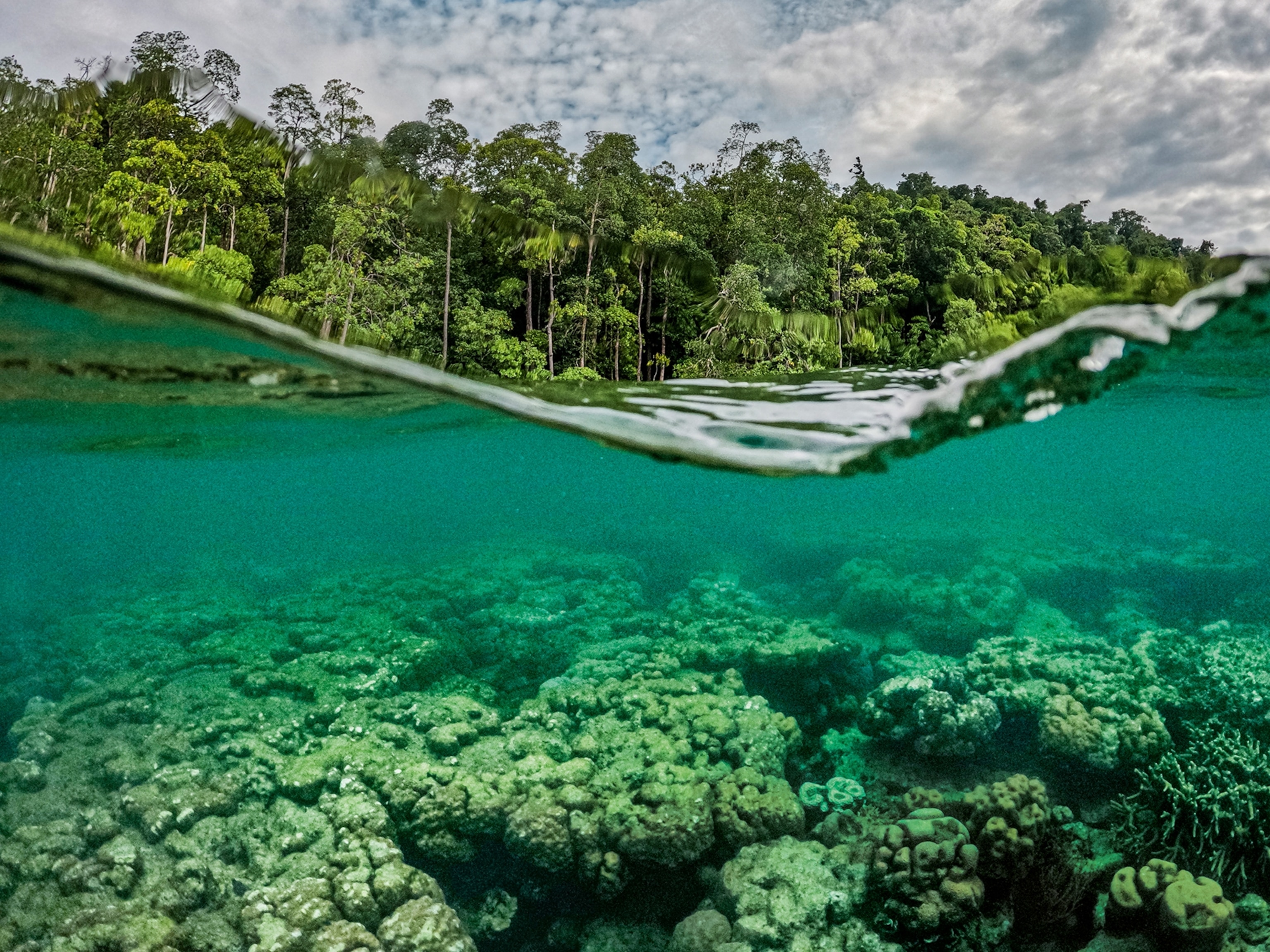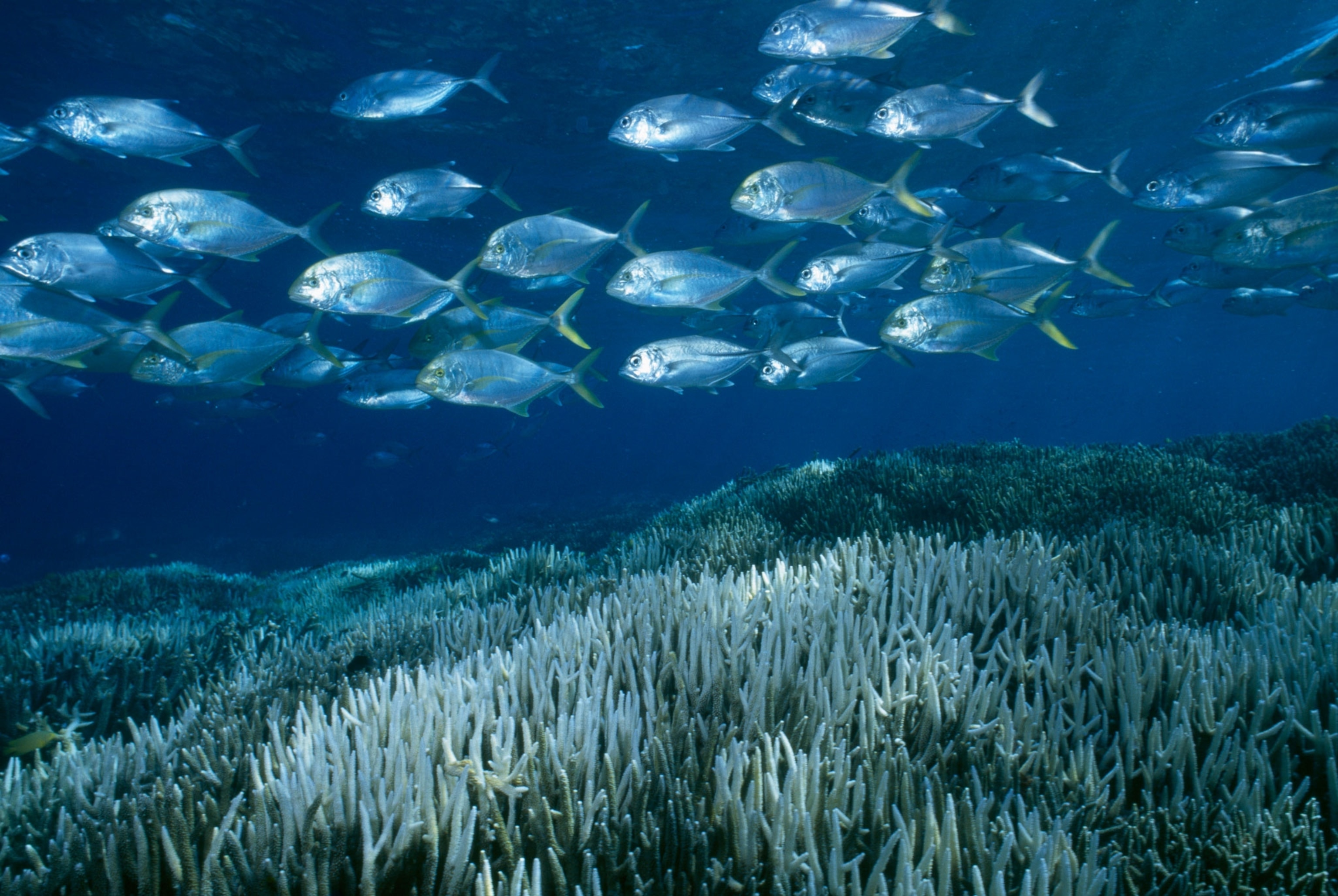
Warming Bleaches Two-Thirds of Great Barrier Reef
A huge portion of the 1,400-mile structure has now suffered severe damage for the second straight year–and scientists blame climate change.
The largest living structure on Earth—an intricate marine system half the size of France, which nurtures 1,500 species of fish—is under attack by warm water for the second time in 12 months. And the window to save it is closing rapidly.
Australia's Great Barrier Reef is suffering from another massive bleaching event, the first time in memory such episodes have hit in back to back calendar years, according to scientists at the Australian Research Council's coral reef program at James Cook University. The scientists announced the results of recent aerial surveys of the reef on Sunday.
And while last year's bleaching was aided by a massive El Niño—a periodic natural warming period event in the tropical Pacific—2017's damage is occurring with no such help.
"The data are truly daunting," said Robert Richmond, a coral reef expert and director of the University of Hawaii's Kewalo Marine Laboratory. "These massive bleaching events have become more severe, are longer lasting and are coming closer together. There just is no question that this is tied to climate change."
Starving a Reef
Bleaching typically occurs when pollutants, excess sunlight or unusually hot waters drive corals to expel symbiotic algae from their tissue, turning corals white. The process doesn't necessarily kill corals immediately. If conditions improve—if the water cools again, say—many corals can be recolonized by algae and recover.
But without the algae, which are their main source of food, corals grow weak and become more susceptible to disease. If conditions don’t improve fast enough, they die.
The problem, according to Terry Hughes, director of the coral reef program at James Cook, is that bleaching is now so frequent and extreme off Australia that these corals are given "zero opportunity" to rebound. That is changing the very makeup of the Great Barrier Reef (GBR).
"It takes a decade or more for the fastest-growing species to make a decent recovery, and far longer for slower-growing corals," Hughes wrote in an email. "Given that we have now seen four major bleaching events on the GBR in less than 20 years (in 1998, 2002, 2016, and 2017), we're already seeing a rapid decline in corals and shift in the mix of species."
Last year's bleaching was far and away the worst on record. It struck the northern portion of the reef, killing, on average, about 67 percent of the corals in patchy sections along a 500-mile stretch north of Cairns, Australia. All that damage was done in less than a year. (By comparison scientists a few years ago showed that it had taken more than a quarter of a century to kill just over half of the corals on other stretches of the reef.)
This year, Hughes and his colleague James Kerry conducted another series of aerial surveys, flying some 5,000 miles as the southern summer ended and water temperatures—and bleaching—reached their peak. What they saw troubled them and other scientists greatly. This year's event so far has hit the central section that was mostly spared last year, allowing existing damage to spread another 400 miles.
"Corals are resilient creatures," Richmond said. "Given a chance they can come back. We're just not getting any breaks whatsoever, and the severity of the problem is increasing with time."
A Global Problem
Today, that problem extends far beyond Australia, as corals around the world face a moment of reckoning. And that poses risks for hundreds of millions of people. Corals provide habitat for a quarter of the world's fish, and 500 million or more people are believed to rely almost exclusively on marine creatures for protein. Reefs also protect shorelines, reducing storm surges that can ravage coastal regions.
Last year and 2015 were the two warmest years on record. As greenhouse gas emissions from the burning of fossil fuels drive ocean temperatures up, climate change has become the single leading cause of bleaching events. And that's with air temperatures on average having increased only 1 degree Celsius (1.8 degrees Fahrenheit) since the dawn of the Industrial Revolution.
Climate scientists have said that even if the world moved at a lightning clip to combat warming, it would be a significant struggle to keep temperature increases below 2 degrees Celsius—a goal set in December 2015 when 195 nations and the European Union signed a climate accord in Paris. Yet many scientists fear the world's corals would not survive even such a limited warming.
Richmond said the next steps are obvious: The world needs to rapidly start reducing greenhouse gases while also eliminating smaller threats to corals—sedimentation and overfishing, for example. That could make remaining corals more resilient.
But it's not yet clear how committed the world really is.
Just last summer, during a gathering of more than 2,000 coral scientists in Hawaii, researchers gathered signatures to send a letter to the prime minister of Australia—a leading coal exporter—to do more to combat carbon dioxide emissions. Meanwhile, in the United States, President Donald J. Trump already is moving to unwind his predecessor's efforts to curb emission from coal-fired power plants, a major source of greenhouse gases.
"We're not just a bunch of reef huggers," Richmond said of coral scientists. "What's good for corals is good for humanity. Most nations get it."
Hughes, the lead author of a major study last month that called for immediate action to stem the damage to corals worldwide, said the problems were serious, but it was not too late.
"If we act now, we'll still have reefs," he said. "But the sooner we act, the better."
As if to highlight his point, U.S. government scientists recently issued another warning: There's a reasonable chance El Niño could return by the end of 2017. That could boost water temperatures even more.

